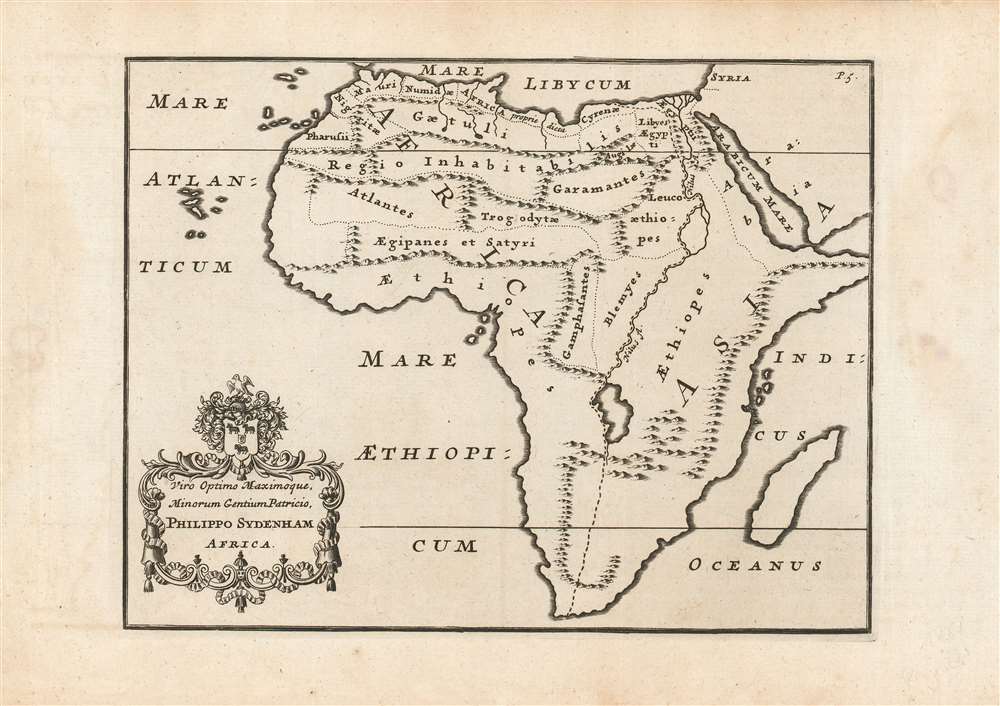1761 Map of Pomponius' Mela's Africa
Africa-reynolds-1761
Title
1761 (undated) 7.25 x 9.5 in (18.415 x 24.13 cm) 1 : 42500000
Description
An Elegant Cartouche
The map is dedicated to Philip Sydenham (1676 - 1739), the third and last Baronet of Brympton. Sydenham was a famous and keen scholar and bibliophile, and a Tory politician (famed for nothing, in that respect.) His scholarly pursuits commanded his full attention, and his estates fell into debt. Ultimately, he sold his library and appears to have led an itinerant life until his death.Publication History and Census
This map was produced for inclusion in a 1739 London edition of Pomponius Mela's De Situ Orbis, and prepared by Eton scholar John Reynolds. The engraver is not known. A posthumous, 1761 edition was printed at Eton using the same plates without change. An example in a dealers' catalog from 2008 attributes the map to Richard Elsworth but we see no other examples corresponding to this. The separate map is not cataloged in OCLC, but the Pote/Reynolds edition of Mela is well represented in institutional collections.CartographerS
Pomponius Mela (died 45 CE) was the first Roman geographer. He produced a short work, De situ orbis libri III, which would continue to be an authority well into the 16th century; geographers such as Ortelius would continue to mine Mela's work for data where modern authorities remained silent. Apart from Pliny's Historia naturalis Mela's work is the only formal geographical work in Classical Latin, and as such it remained in the curriculum well into the 19th century. More by this mapmaker...
John Reynolds (July 9, 1671 - July 27, 1758) was an English priest, teacher and scholar. He had a lifelong connection with the Eton, entering the school as a student in 1689. He earned his BA at exeter in 1694, and his Masters in 1698; he would earn a degree in Divinity at Oxford in 1718. He was ordained as a priest in 1729. He would become a Fellow of the school in 1733. He was a Canon of Exeter Cathedral, and a benefactor to King's College. His edition of Pomponius Mela's De Situ Orbis was published posthumously in 1761. Learn More...
Joseph Pote (1703?–1787) was an English publisher, editor and bookseller who carried out his business in Eton (and indeed appears to have kept a boarding house for students of the famous school there.) His connections with the school appear to have been many: he published the school's alumni catalogue in 1730, for example. Much of his output - for example, his 1761 edition of Mela, and his histories of Windsor Castle - are aimed at an educational audience.
A couplet ascribed to Eton boys of the 18th century complains of Pote:
Jos. Pote, a man of great renownPlus ça change. Learn More...
Buys a book for sixpence and sells it for a crown.

